Pop idol Mima looks forward to a bright new career when she quits singing to pursue acting. However, her life begins to fall apart after she lands a role in a sexually charged murder mystery. An anime film by Satoshi Kon.
PERFECT BLUE
パーフェクトブルー
今敏
Satoshi Kon
(1997)
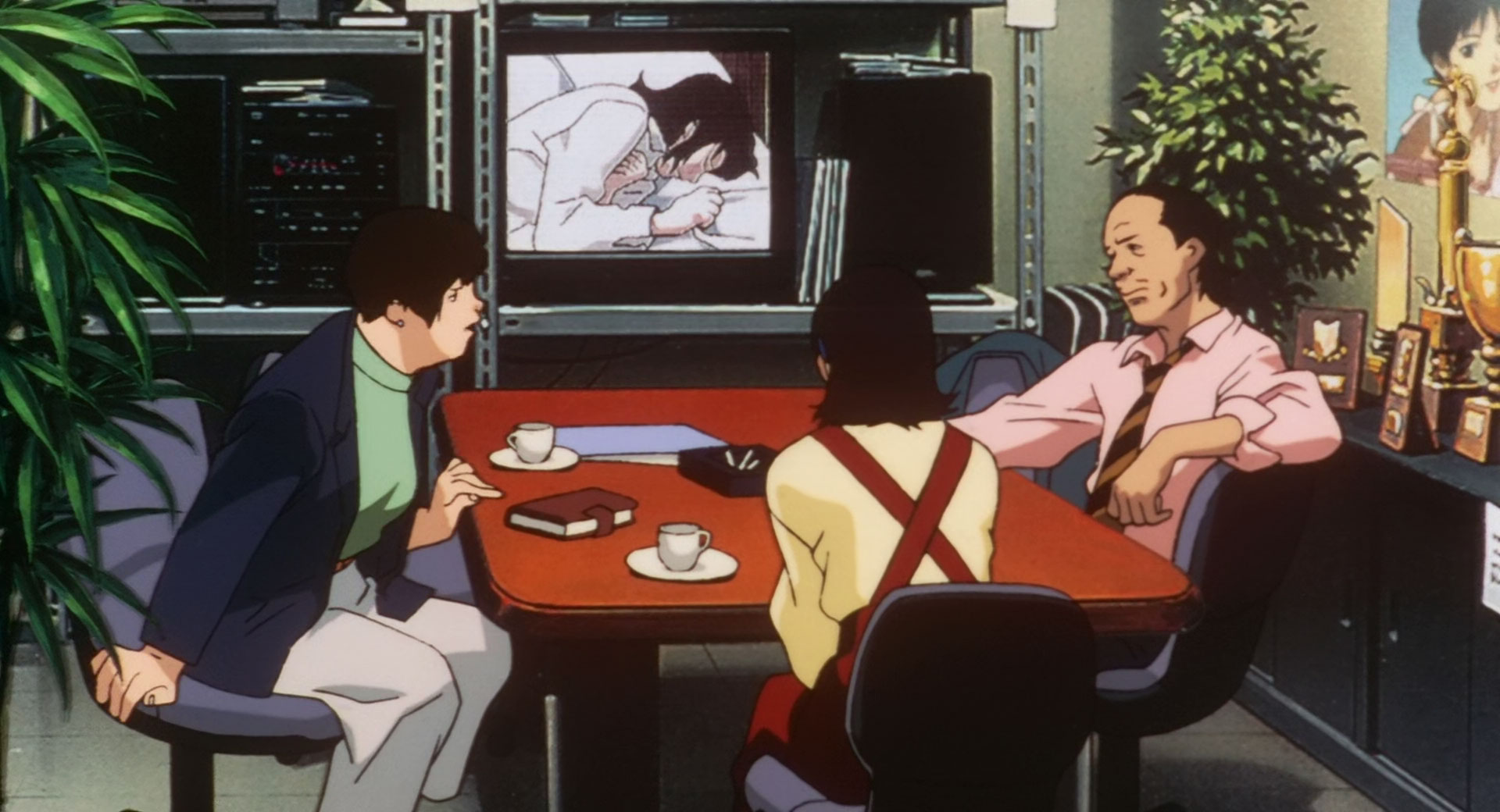
After two and a half years struggling as an idol in CHAM, a J-pop girl group, Mima Kirigoe (霧越未麻) receives an opportunity to act. However, a scheduling conflict arises and becomes problematic, making it difficult for her to fulfill her duties in both singing and acting. Despite her childhood dream of becoming a singer, Mima ultimately decides to leave CHAM to pursue her career as an actress.
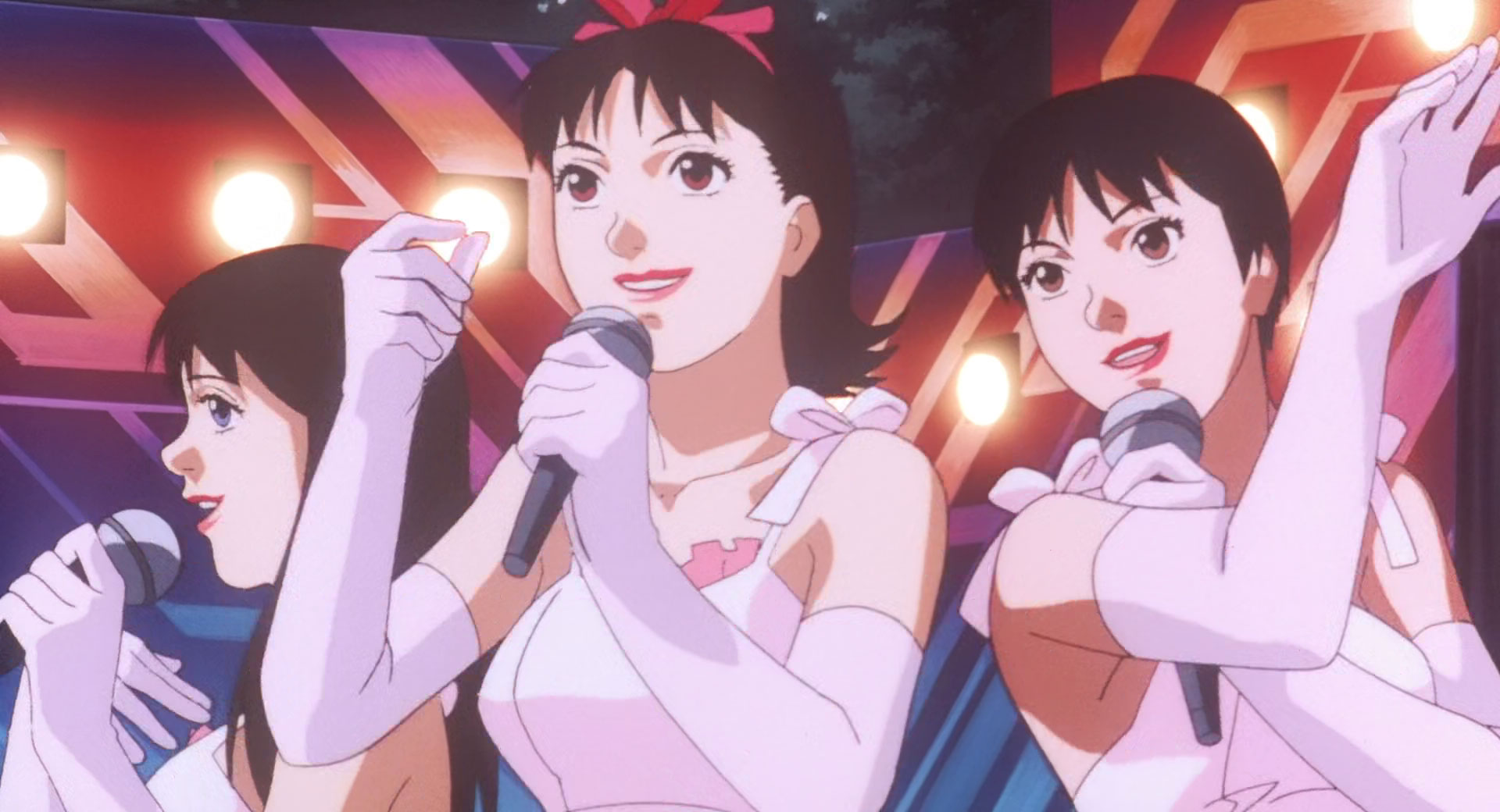
CHAM announces Mima’s graduation from the group during their mini concert. Many fans express their disappointment with Mima’s decision. As Mima leaves after the concert, she receives several letters from her fans. Mima becomes frustrated when she hears one of her fans shouting that he had been watching Mima’s room (未麻の部屋).
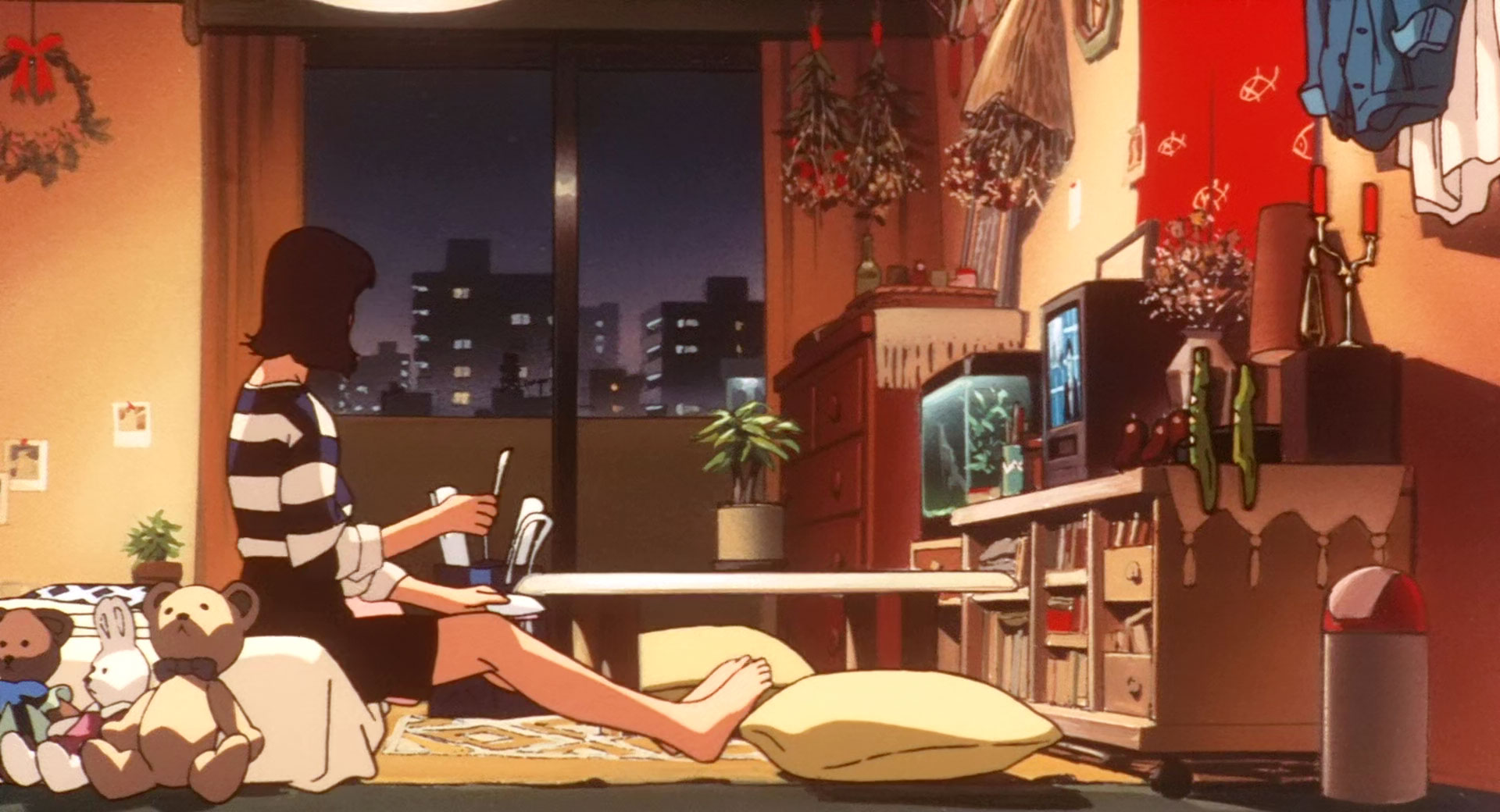
At Mima’s apartment, she’s horrified while reading a fan’s letter that includes a URL address and claims he always likes looking into her room. Completely unfamiliar with the internet, Mima thinks the fan meant he actually knows where she lives and is creepily spying on her. Adding to her terror, Mima receives an anonymous collage fax with the word ” 裏切者” (Traitor) on it.
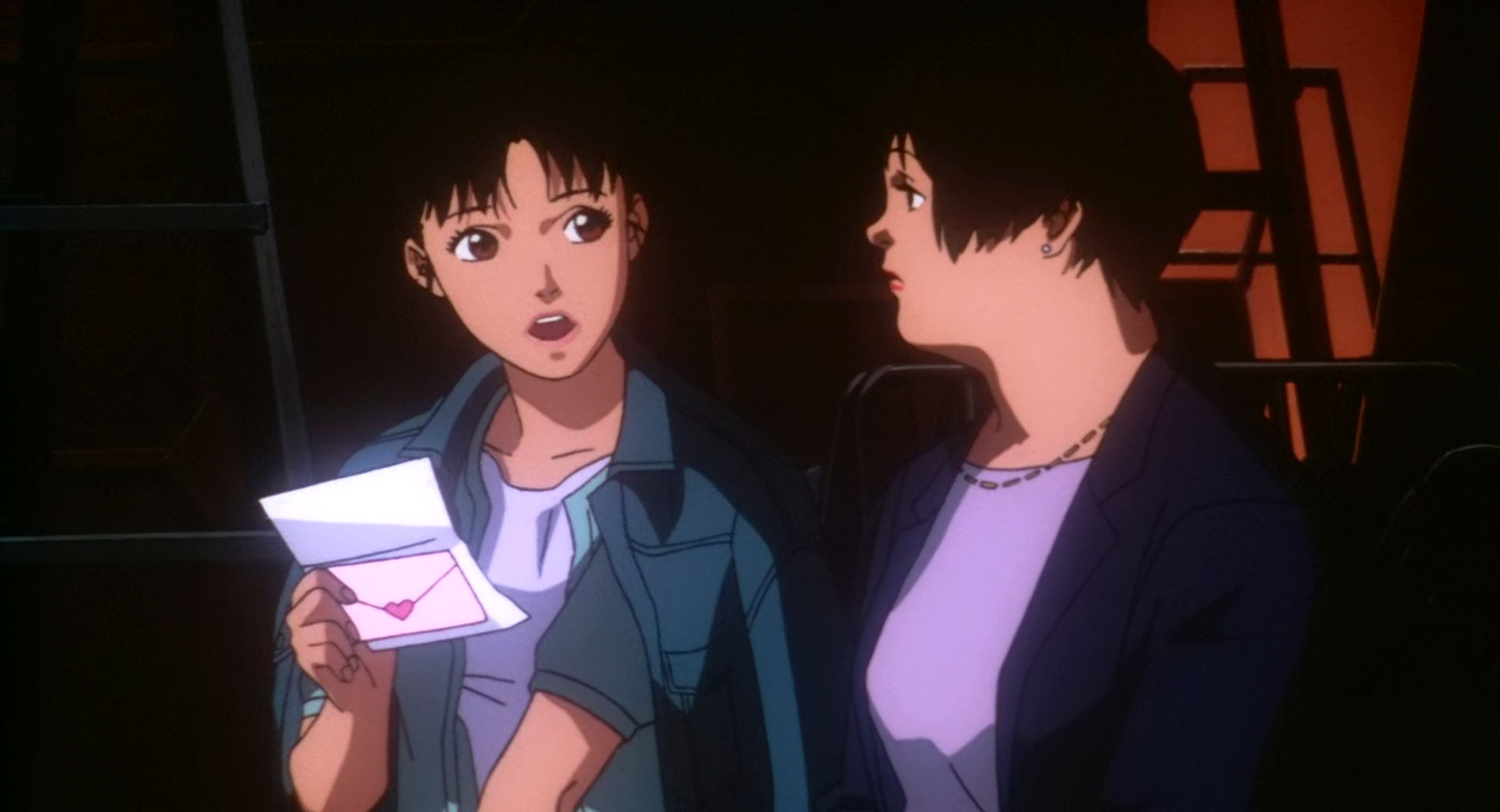
The next day, at the television studio shooting for Mima’s minor role as victim’s sister in the detective series “Double Bind (ダブルバインド),” she confides in her manager Rumi (ルミ), about the creepy fan letter. Rumi takes a look at the letter, dismisses it as an ordinary letter, and briefly explains that the URL address is likely a fan-made homepage for Mima.
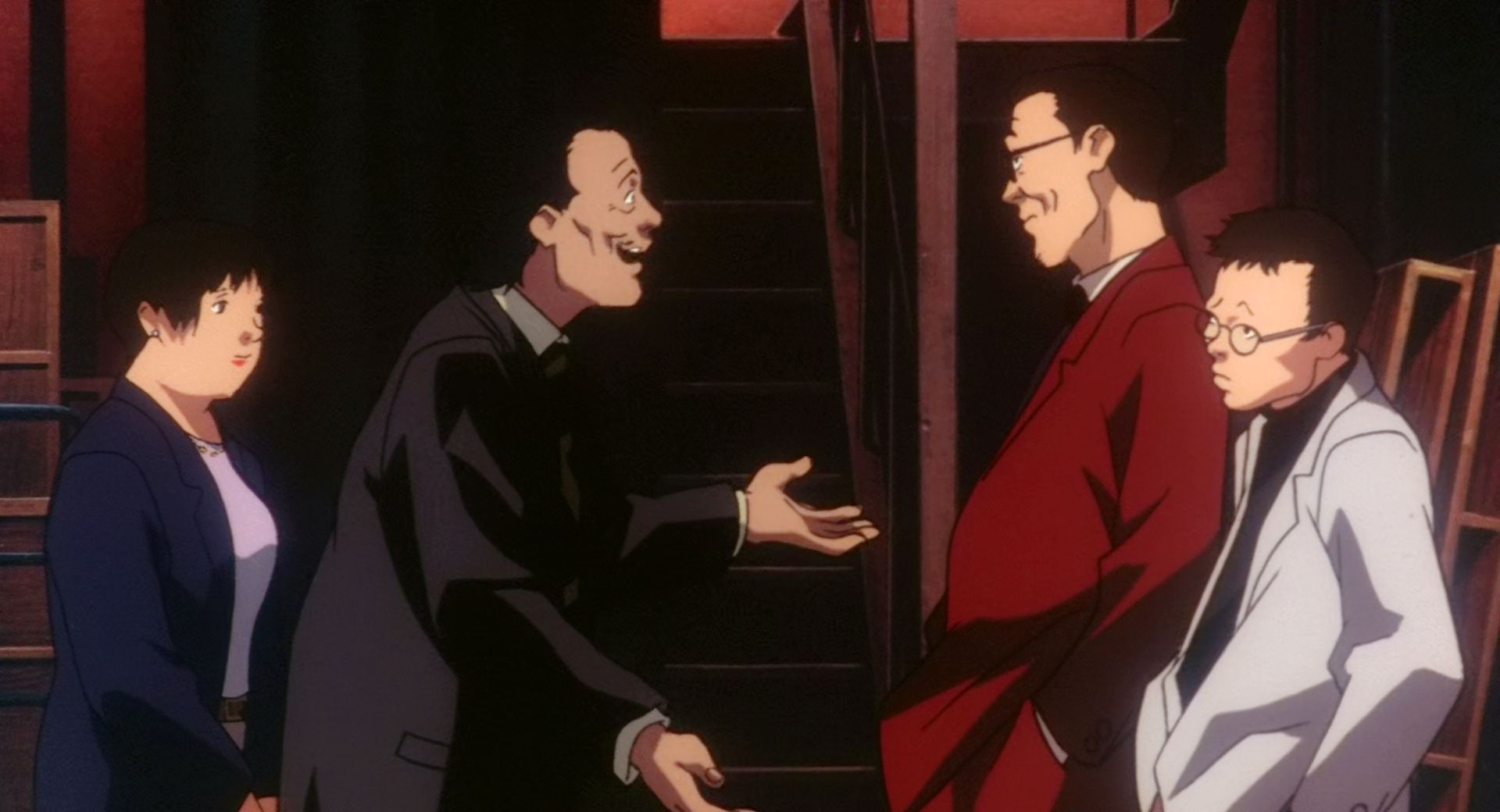
Mima’s agent, Tadokoro (田所), persuades Double Bind’s producer Tejima (手嶋), and screenwriter Takao Shibuya (渋谷貴雄), who were initially skeptical about bringing a pop idol into the professional acting world, to give Mima a chance to shine as an actress. Tadokoro assures them that Mima quit idol group to pursue acting career fulltime. Tejima hands Mima’s fan letter to Tadokoro, but when Tadokoro opens Mima’s fan letter, it suddenly explodes, injuring him as he collapses onto the floor, bleeding.
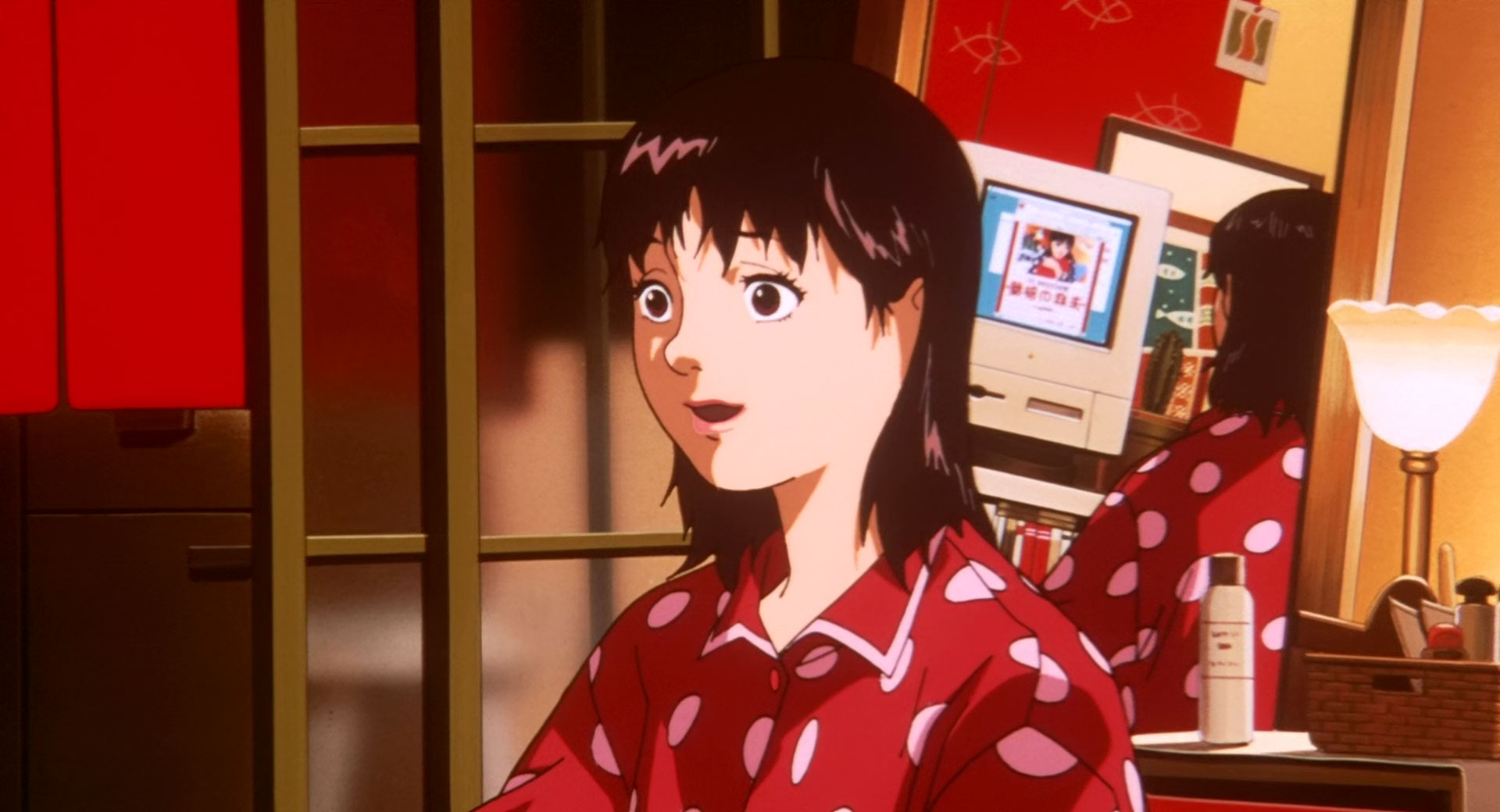
Rumi helps Mima set up the internet connection in her apartment. This allows Mima to visit 未麻の部屋 (Mima’s Room), a fan-made homepage designed like her personal diary, with each entry describing Mima’s activities or emotions. Initially,
Mima finds the homepage amusing. However, a terrifying realization occurs to her when she notices how accurate the information is, down to the specific brand of milk she just bought. Mima is further shocked when she clicks the “Today’s Words” link and hears her own voice from today’s shoot emerging from the speaker.

Several weeks later, a new script is sent to Tadokoro’s agency, offering Mima a larger role, as a key character in the series. Despite Rumi’s attempt to convince Mima to refuse the new script with a larger role due to a rape scene – arguing it would damage her idol image – Mima decided to accept the role, hoping to gain recognition as a serious actress.
Tadokoro is happy and assures Mima that playing a character involved in a rape scene is something many actresses experience in their careers. He even tries to downplay the scene’s seriousness, claiming it’s a common occurrence for actresses, asserting that Hollywood actress Jodie (Foster) also did it.
The Accused (1988) features a nearly 5-minute long, graphic and realistic portrayal of the gang rape of the protagonist Sarah Tobias (played by Jodie Foster) in the back room of a bar. This scene is powerful and significant depiction of the trauma and injustice experienced by victims of sexual assault. Jodie Foster’s performance as Sarah earned her first Academy Award for Best Actress at the age of 26.
On the train home, Mima begins to experience another version of herself dressed in idol outfit reflected on train door. Her reflection expresses disappointment and complains that she would never accept that role before the reflection abruptly disappears.
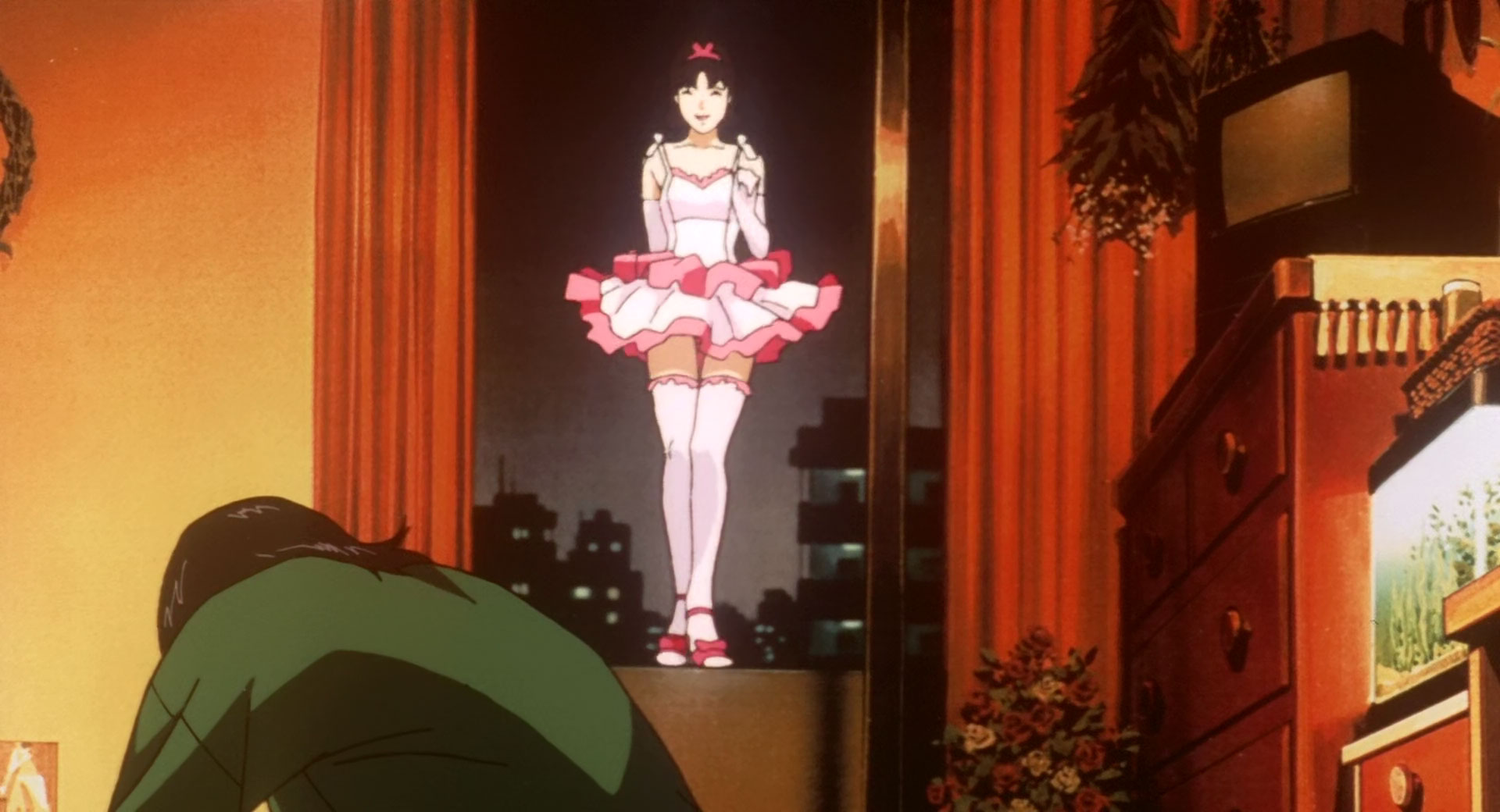
The day of filming the rape scene arrives. Mima has to repeatedly act out the scene for multiple takes. The scene appears utterly realistic that even Tadokoro and Rumi feel incredibly uncomfortable watching it. Rumi can’t hold back her tears and suddenly leaves the studio.
Soon, Mima becomes famous and widely recognized for her role in the series. Meanwhile, her obsession with “Mima’s Room” homepage deepens. Struggling to distinguish real life from her acting life, she is plagued by repeated, seemingly unreal sightings of another version of herself. But that’s just the beginning of the real horror.
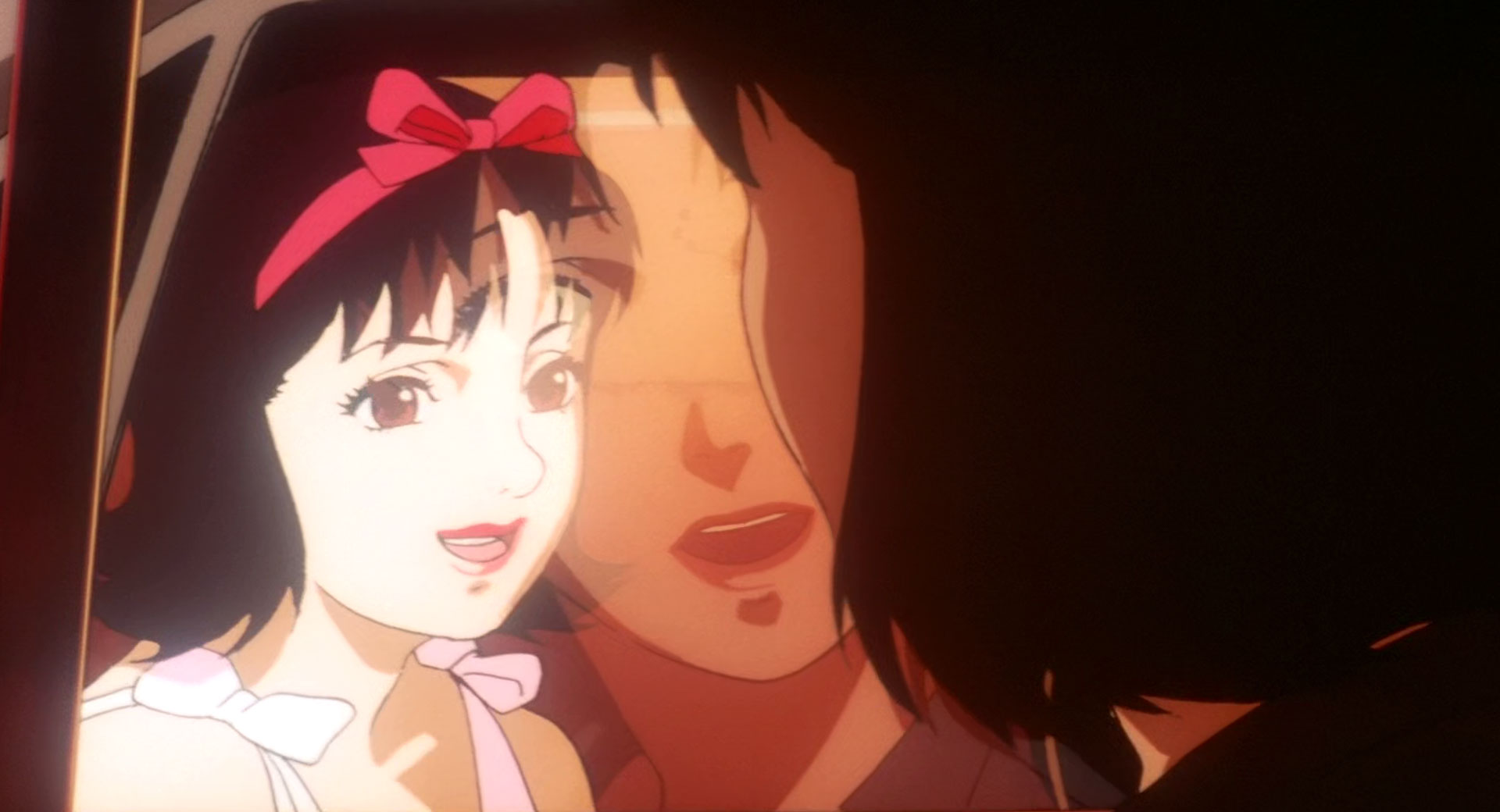
The next day, Double Bind’s screenwriter Takao Shibuya is found brutally murdered in the elevator, stabbed repeatedly with a sharp object. The motives behind the attack are unclear. Could it be a vengeful creepy fan, another version of Mima, or someone else entirely?
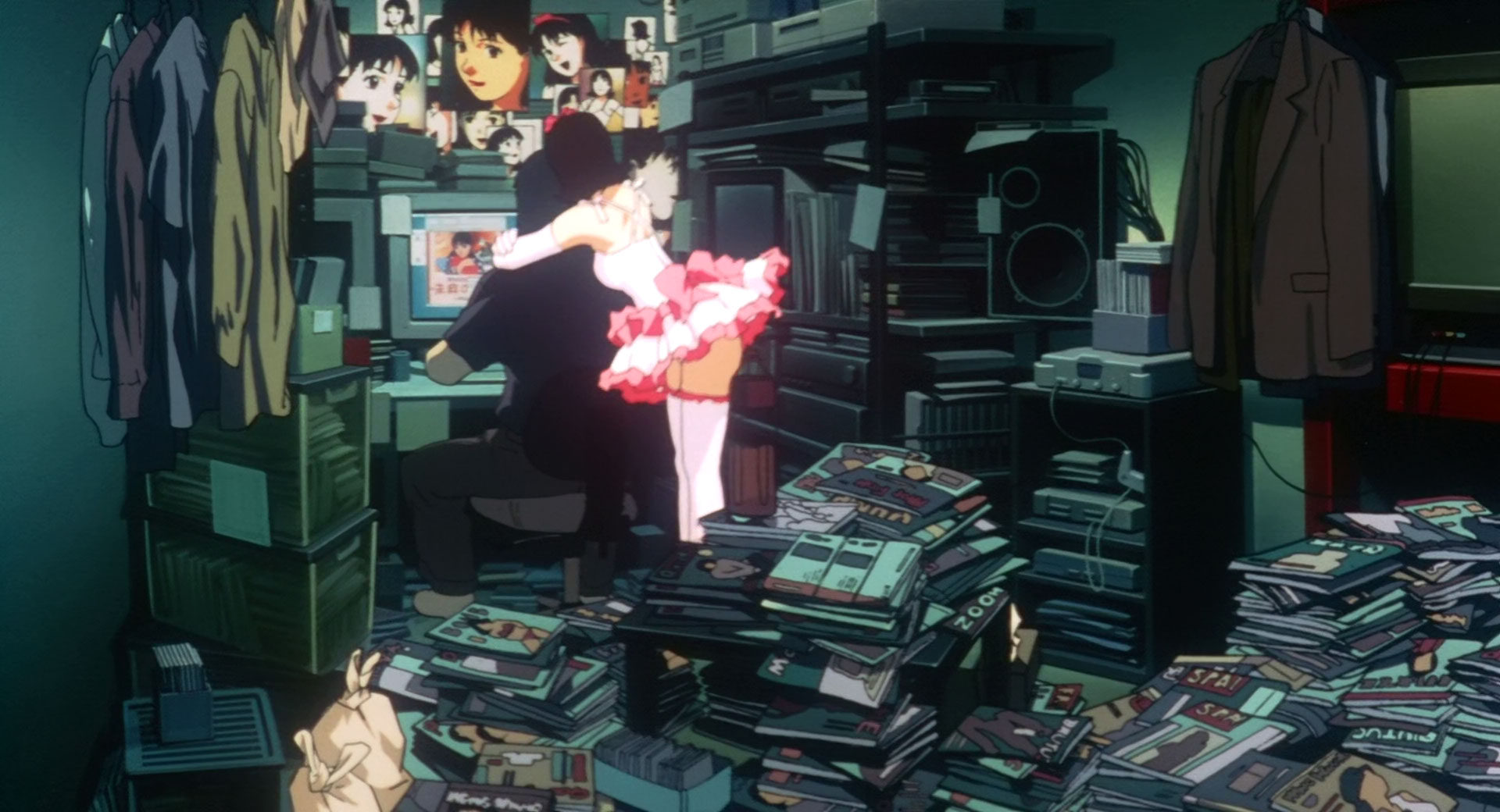
Directed by Japanese filmmaker Satoshi Kon, PERFECT BLUE is a psychological thriller that masterfully blurs the lines between reality and imagination, leaving the viewer questioning what’s truly happening on screen.
Satoshi Kon’s genius lies in his meticulous visual storytelling. He employs disorienting camera angles, dreamlike sequences, and cleverly edited scenes to create a sense of unease. One moment, Mima is on a movie set, the next, she’s lost in a scene indistinguishable from reality. The viewer experiences the confusion alongside Mima, questioning what’s fabricated and what’s genuine.
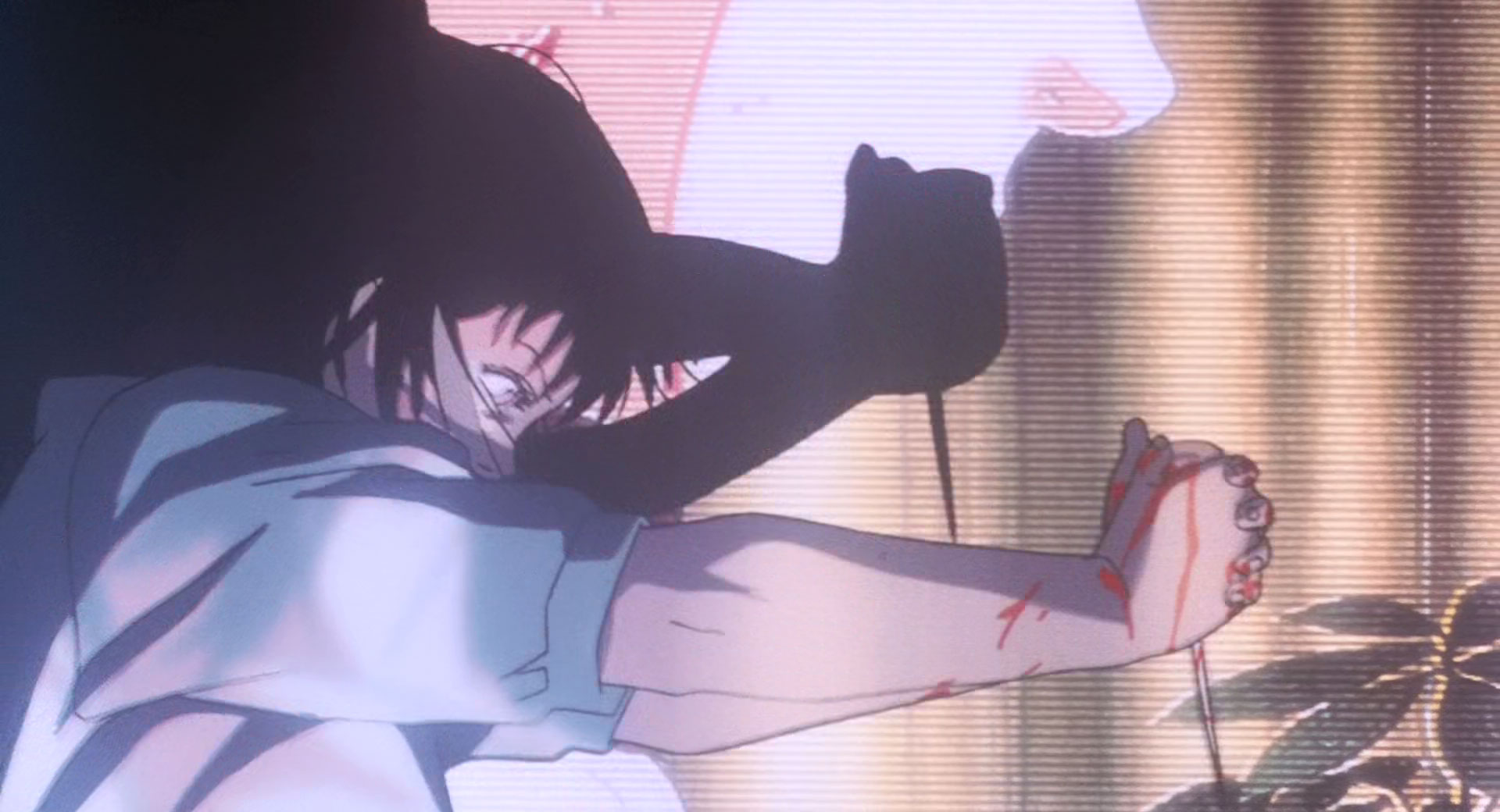
PERFECT BLUE doesn’t shy away from psychological complexity, as it delves into the psychological impact of fame and the pressure to maintain a specific image. Mima’s struggle to break free from her idol persona and the media’s manipulation create a relatable and cautionary tale. The film explores themes of obsession, identity, and the fragility of the human mind.
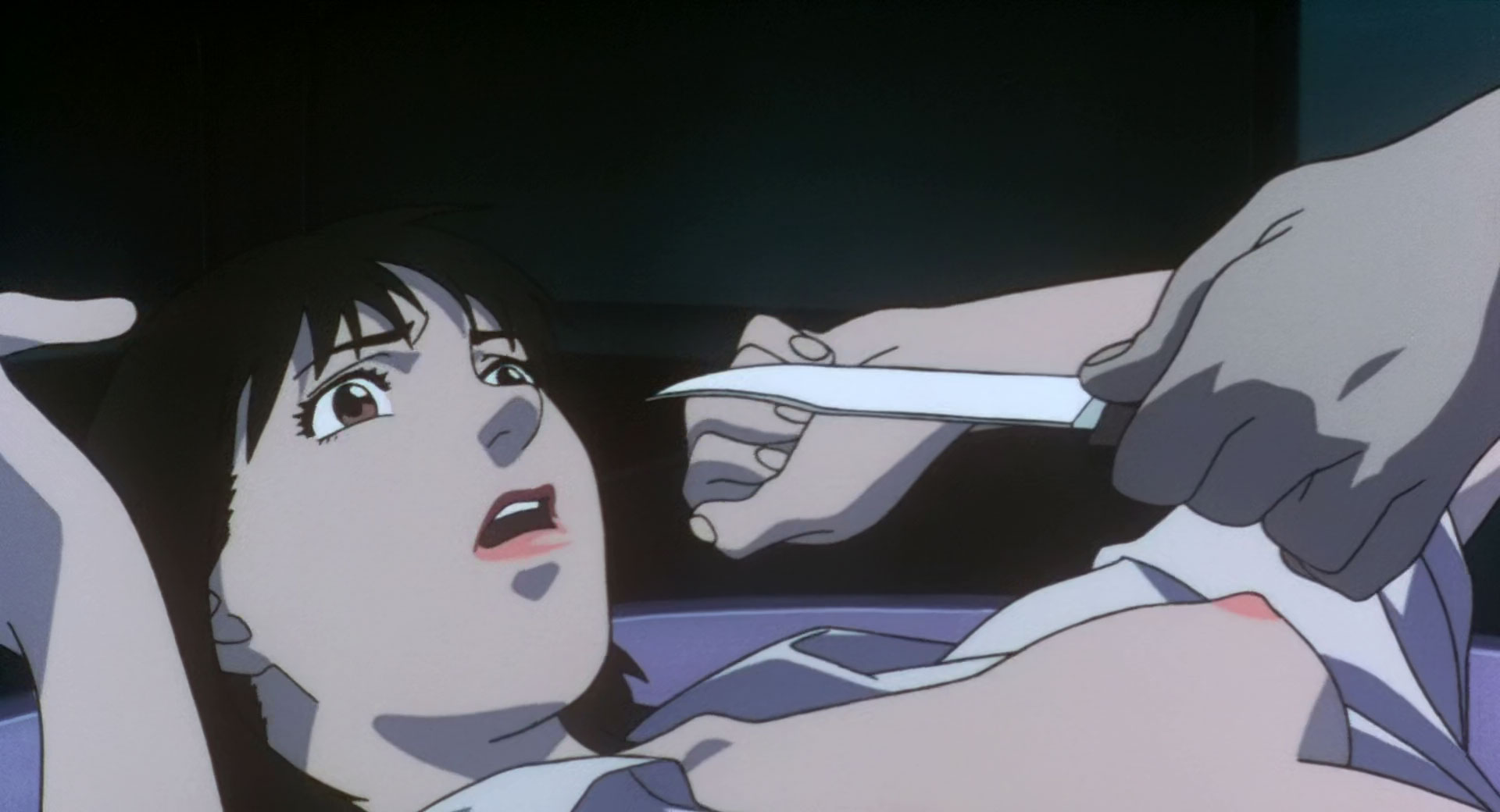
The film has a few weak points. One is the real identity of the antagonist, which is such an unexpected twist that viewers likely wouldn’t have guessed it.
Additionally, the film never explicitly explains how Mima could have dreamed of the murder in such precise detail. This lack of explanation, along with the film’s ambiguous ending, leaves considerable room for interpretation. From the beginning, the film establishes that nothing is what it seems.
The possibility remains that the Double Blind series was real, and the events that followed were Mima’s descent into delusion. Alternatively, the entire narrative could be a figment of someone else’s imagination.
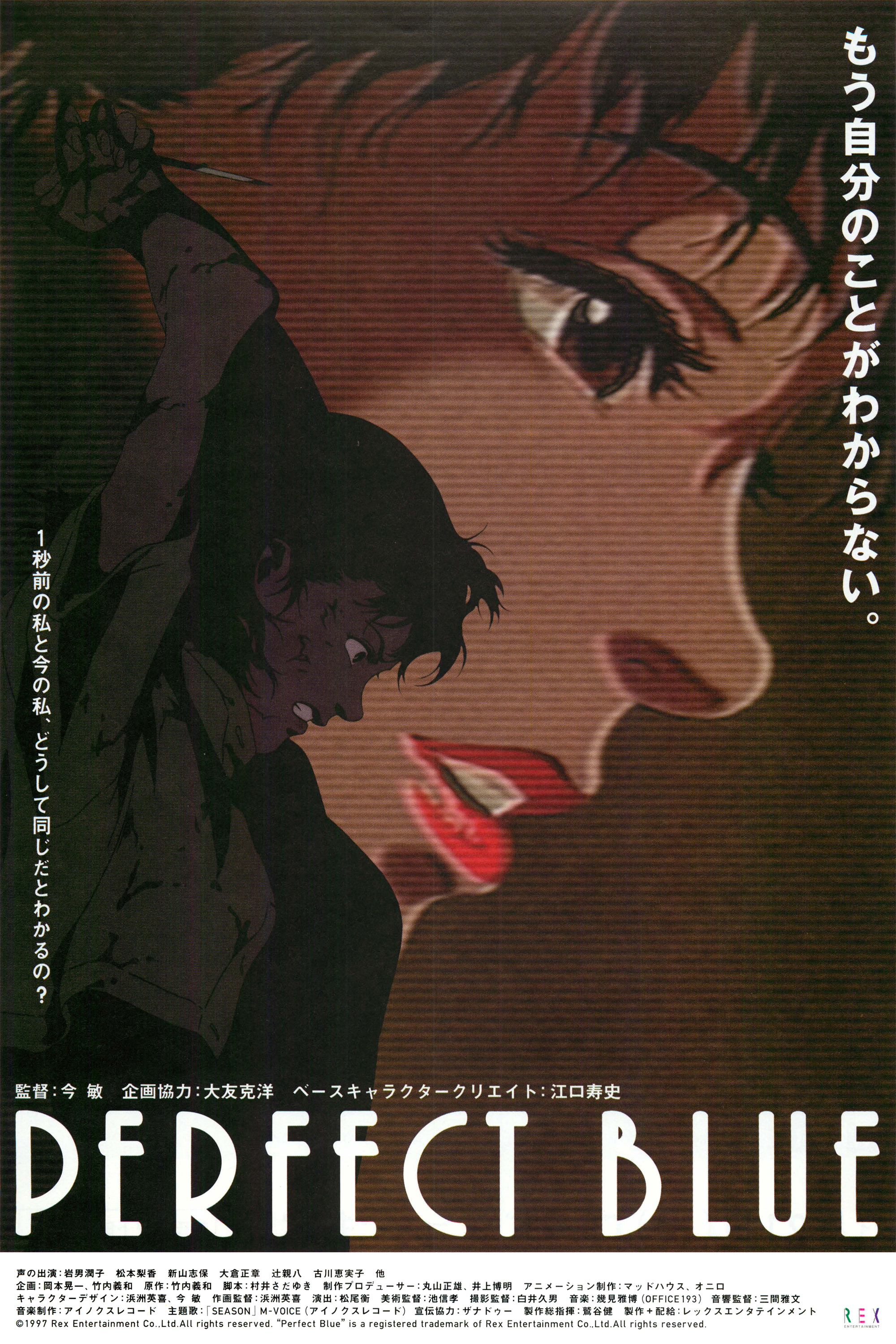
PERFECT BLUE premiered at Fantasia Film Festival on 5 August 1997. The film was theatrically released in Japan on 28 January 1998.




